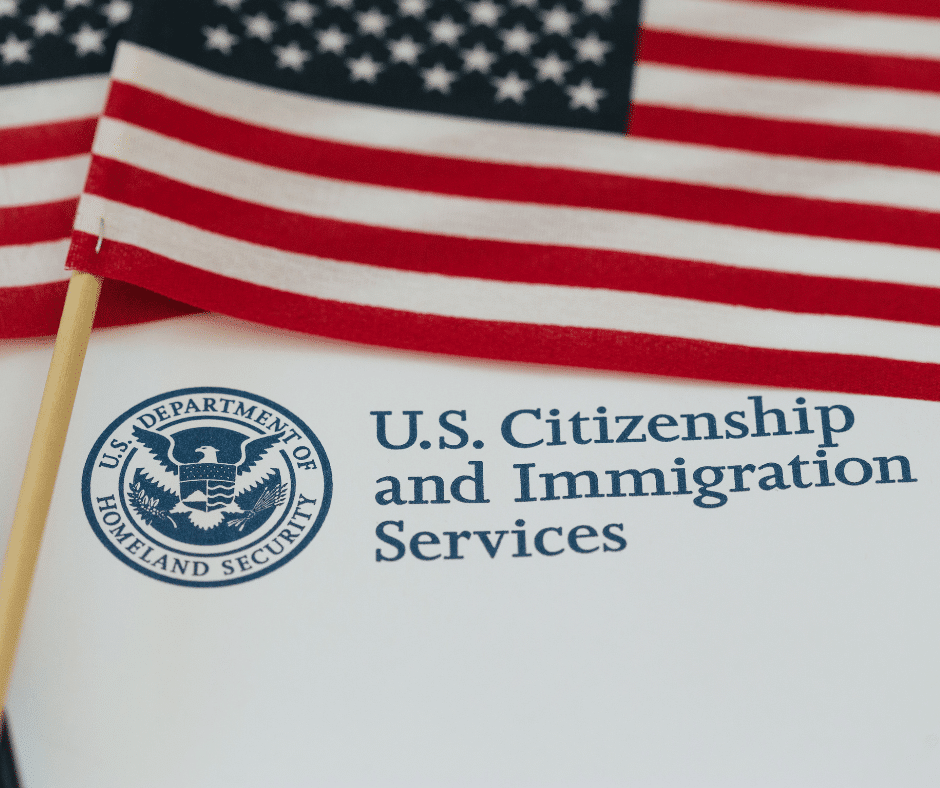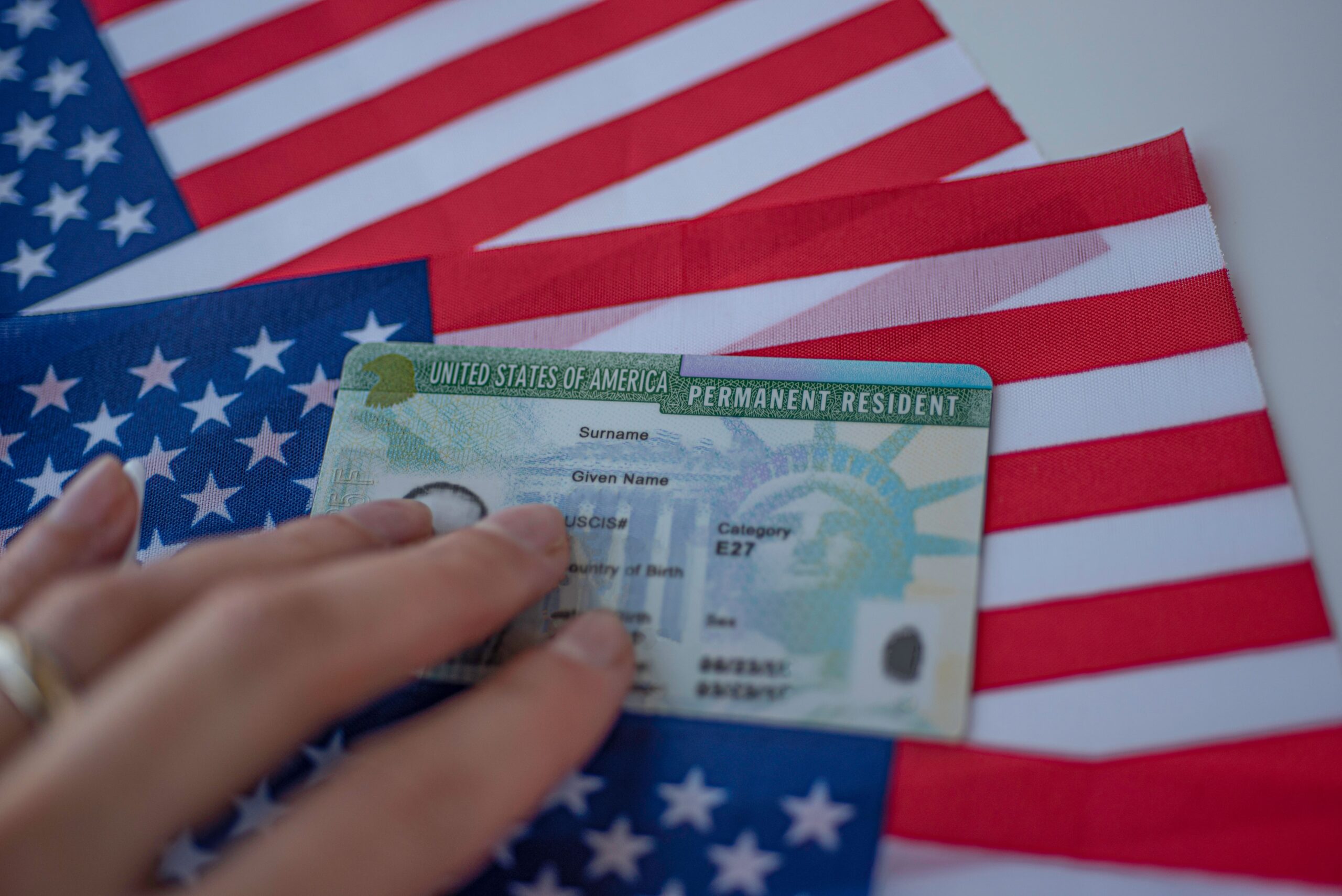Many immigrants come to the U.S. in hopes of getting a green card. One way to get a green card is by meeting the adjustment of status requirements. In broad terms, you can adjust your status if you are in the U.S. with good status and an immigrant visa is available.
Navigating the immigration system is tough, especially on your own. If you are looking into adjusting your status, contact the Law Office of Rosina C. Stambaugh. We can help you understand your options and guide you through the application process.
What Are the Requirements to Apply for Adjustment of Status?
You can generally adjust your status if you:
- Are in the U.S.,
- Qualify for a green card,
- Have a visa available, and
- Are not otherwise ineligible.
If you are not in the U.S., you do not adjust your status to get a green card. Instead, you would go through consular processing.
Core Eligibility Requirements for Adjustment of Status
1. Lawful Entry to the U.S.
Applicants must have entered the United States legally—meaning they were inspected and either admitted or paroled by a U.S. immigration officer. This is a foundational requirement.
2. Immigrant Visa Eligibility
You must qualify for an immigrant visa through a family member, employer, or another approved petition. This includes categories like family-based sponsorship, employment-based immigration, or humanitarian relief such as asylum or VAWA.
3. Visa Availability
A visa number must be immediately available both at the time you file Form I-485 (Application to Register Permanent Residence or Adjust Status) and when USCIS makes a final decision. This typically depends on your priority date and the visa bulletin.
4. No Grounds of Inadmissibility
You must not fall under any of the inadmissibility categories under U.S. immigration law, such as certain criminal convictions, immigration violations, or public health issues. If a ground applies, you may need to apply for a waiver.
5. Financial Sponsorship
Most family-based applicants must submit Form I-864, Affidavit of Support, to prove they will not become a public charge. The sponsor must meet income requirements or show sufficient assets.
6. Physical Presence in the U.S.
You must be physically present in the United States when you submit your adjustment of status application.
7. Proper Filing of Form I-485
You must submit your application with all required forms, documents, and fees. This includes biographic information, medical exams (Form I-693), and biometrics.
Qualifying for a Green Card
The primary ways to qualify for a green card include:
- Family,
- Employment, and
- Humanitarian concerns.
The path to a family or employment-based green card generally begins with a sponsor filing an immigrant petition with United States Citizenship and Immigration Services (USCIS) on behalf of the intended immigrant beneficiary.
Family-Based Green Cards
There are two types of family-based green cards: immediate relative and family preference. Both generally require a family member to submit Form I-130, Petition for Alien Relative. In limited circumstances, beneficiaries can sponsor themselves using Form I-360, Petition for Amerasian, Widow(er), or Special Immigrant.
The below chart explains who can sponsor whom:
| Visa Category | Sponsor | Beneficiary |
| Immediate Relative | U.S. citizen | Spouse, unmarried children under age 21, parent |
| Preference One (F1) | U.S. citizen | Unmarried children |
| Preference Two (F2A) | Lawful Permanent Resident (LPR) | Spouses, unmarried children under age 21 |
| Preference Two (F2B) | LPR | Unmarried children 21 and older |
| Preference Three (F3) | U.S. citizen | Married children |
| Preference Four (F4) | U.S. citizen | Siblings |
Generally, minor children can be included on their parent’s application as “derivatives.”
Employment-Based Green Cards
There are five employment-based preference categories:
| Visa Category | Sponsor | Beneficiary | Immigrant petition form |
| First Preference (EB1) | Beneficiary or employer | Individuals with extraordinary ability, outstanding professors and researchers, and certain multinational managers and executives | Form I-140, Immigrant Petition for Alien Workers |
| Second Preference (EB2) | Beneficiary or employer | Individuals holding advanced degrees or with exceptional ability | Form I-140 |
| Third Preference (EB3) | Employer | Skilled workers, unskilled workers, and professionals | Form I-140 |
| Fourth Preference (EB4) | Beneficiary or employer | “Special Immigrants” | Form I-360 |
| Fifth Preference (EB5) | Beneficiary | Immigrant investors | Form I-526, Immigrant Petition by Standalone Investor, or Form I-526E, Immigrant Petition by Regional Center Investor |
When an employer sponsors an EB2 or EB3 visa, the employer must usually get labor certification first.
Humanitarian Green Cards
Humanitarian programs that lead to green cards include:
- Asylum,
- Refugee status,
- S-visas for criminal informants,
- T-visas for human trafficking victims, and
- U-visas for crime victims.
- VAWA (Violence Against Women Act), you may be eligible to become a lawful permanent resident (get a Green Card) if you are the victim of battery or extreme cruelty committed by: A U.S. citizen spouse or former spouse; A U.S. citizen parent; A U.S. citizen son or daughter; A lawful permanent resident (LPR) spouse or former spouse; or An LPR parent.
Most of these status types require that you hold the status or visa for a period before you can adjust your status.
Having an Available Visa
Yearly limitations set by U.S. immigration law determine whether a visa is available. Humanitarian and immediate relative visas are always available. However, U.S. family and employment-based visas are limited as follows:
| Visa Type | Yearly Limit |
| F1 | 23,400 |
| F2A | 87,934 (77% of 114,200) |
| F2B | 26,266 (23% of 114,200) |
| F3 | 23,400 |
| F4 | 65,000 |
| Family Total | 226,000 |
| EB1 | 40,040 (28.6% of 140,000) |
| EB2 | 40,040 (28.6% of 140,000) |
| EB3 | 40,040 (28.6% of 140,000) |
| EB4 | 9,940 (7.1% of 140,000) |
| EB5 | 9,940 (7.1% of 140,000) |
| Employment Total | 140,000 |
Because of these limitations, several visa categories are significantly backlogged.
To determine when a visa will become available, you consult the Visa Bulletin. To understand the bulletin, you need to check USCIS’s website to determine which chart to consult and to
know your priority date.
When you submit an immigrant petition, you receive a receipt notice from USCIS. The date of the receipt notice indicates the petition was received and is your priority date.
Once the date on the relevant chart becomes later than your priority date, a visa is available.
Preventing Ineligibility
Certain conduct can prevent you from adjusting your status. One of the most common bars to eligibility occurs when an immigrant enters the country without papers or overstays a visa. In some circumstances, USCIS might waive bars to adjustment. In others, you may have to leave the U.S.
How Can I Adjust My Immigration Status?
You adjust to LPR status by submitting Form I-485, Application to Register Permanent Residence or Adjust Status to USCIS. Along with your I-485, you submit supporting documents proving your identity, your current legal status, and the outcome of any immigrant petitions filed on your behalf.
There are no specific adjustment of status income requirements, but most applicants have to prove they will not rely on U.S. government funds for financial support. This usually means submitting proof of your financial ability to support yourself, having a U.S. national submit Form I-864, Affidavit of Support Under Section 213A of the INA, or both. The I-864 is one of the most intensive adjustment of status through marriage requirements.
Next, you generally attend an interview with a USCIS officer, who asks questions to confirm you meet the adjustment of status requirements. If they conclude you fall short, they will notify you of why they made that conclusion. If they conclude you qualify, they should issue you a green card within a few days or weeks.
Having Questions About Adjustment of Status Requirements? Contact Us Today
The immigration lawyers at the Law Office of Rosina C. Stambaugh are passionate about helping immigrants. If you are considering applying to adjust your status, reach out today.






